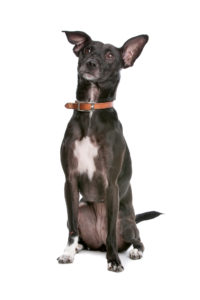 Many mutt owners have played the guessing game at one time or another. Where did that short, curled-up tail on an otherwise shepherd-like dog come from? Or those gangly legs on a Beagle mix? The wide bully-breed smile on a wirehaired Terrier? Feathering on a Boxer? Well, for a decade now, it has been possible to get the answer. DNA tests to determine canine genealogy are not only widely available—and becoming more accurate. They’re not 100% scientifically accurate yet, but that only means you won’t be able to prove your dog’s ancestry in a court of law.
Many mutt owners have played the guessing game at one time or another. Where did that short, curled-up tail on an otherwise shepherd-like dog come from? Or those gangly legs on a Beagle mix? The wide bully-breed smile on a wirehaired Terrier? Feathering on a Boxer? Well, for a decade now, it has been possible to get the answer. DNA tests to determine canine genealogy are not only widely available—and becoming more accurate. They’re not 100% scientifically accurate yet, but that only means you won’t be able to prove your dog’s ancestry in a court of law.
Early testing services covered anywhere from 39 to 68 breeds, but now today that number has expanded more than 350. And where before a blood sample had to be collected by a veterinarian, all that’s required now is a mouth swab—a process you can carry out at home. The swab is placed in a collection bag which is sealed and mailed off, along with a check, to a laboratory. Two to three weeks later, a link to your dog’s ancestry report arrives in your inbox. Aside from revealing the origin of physical traits, such a report can offer useful clues about behaviors like digging, barking, and herding. If you discover your dog has hound parentage, for example, engaging in tracking, trailing, or other scent activities might make him more content. Dogs given an outlet for their innate abilities often become calmer and better behaved in general.
For some people, playing guess-what-my-dog-is is part of the charm of having a mutt. For others, finding out the answer is well worth the cost of the test. And apparently, quite a few people give canine genealogy tests as a present—something a little different for the dog lover who has everything. If you have a curiosity itch to scratch or fancy a unique gift idea, don’t just pick any old company online. Do some careful research first or ask your veterinarian to recommend a reputable testing service.

